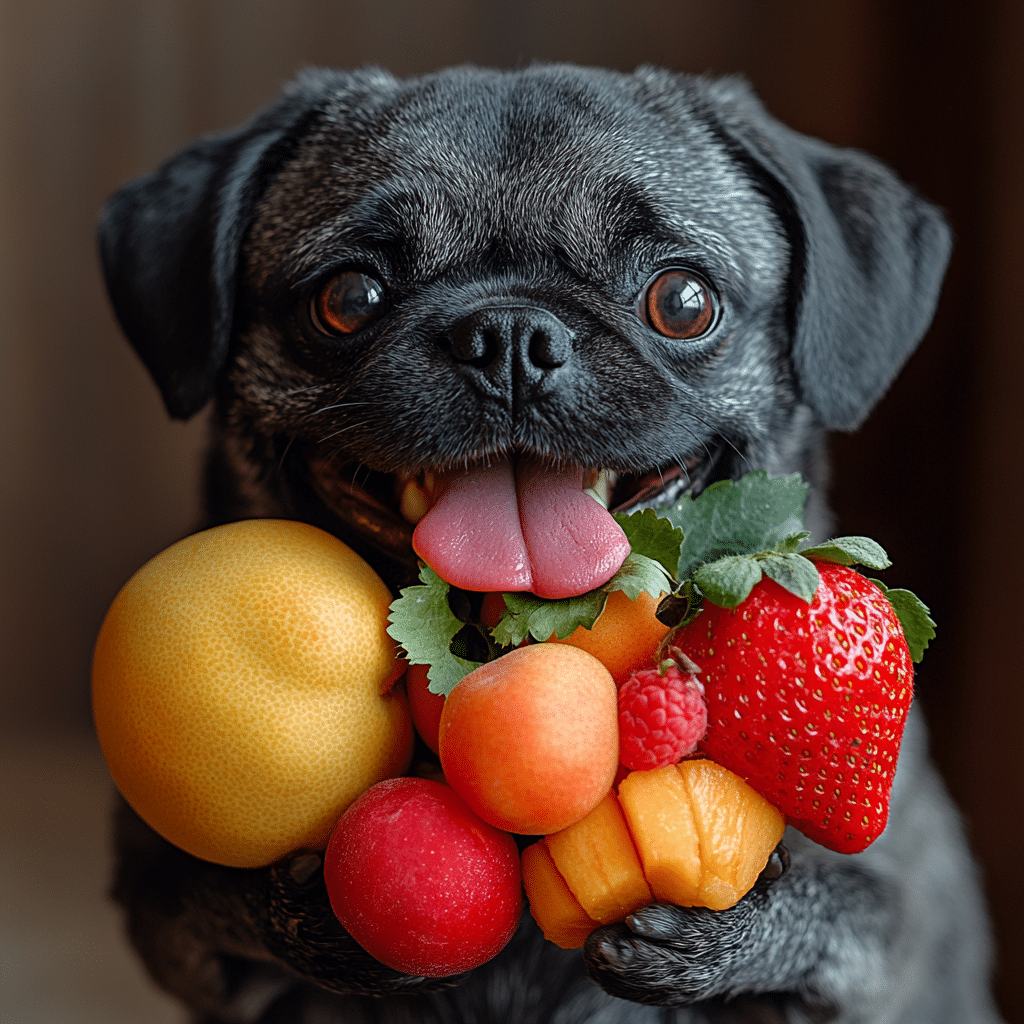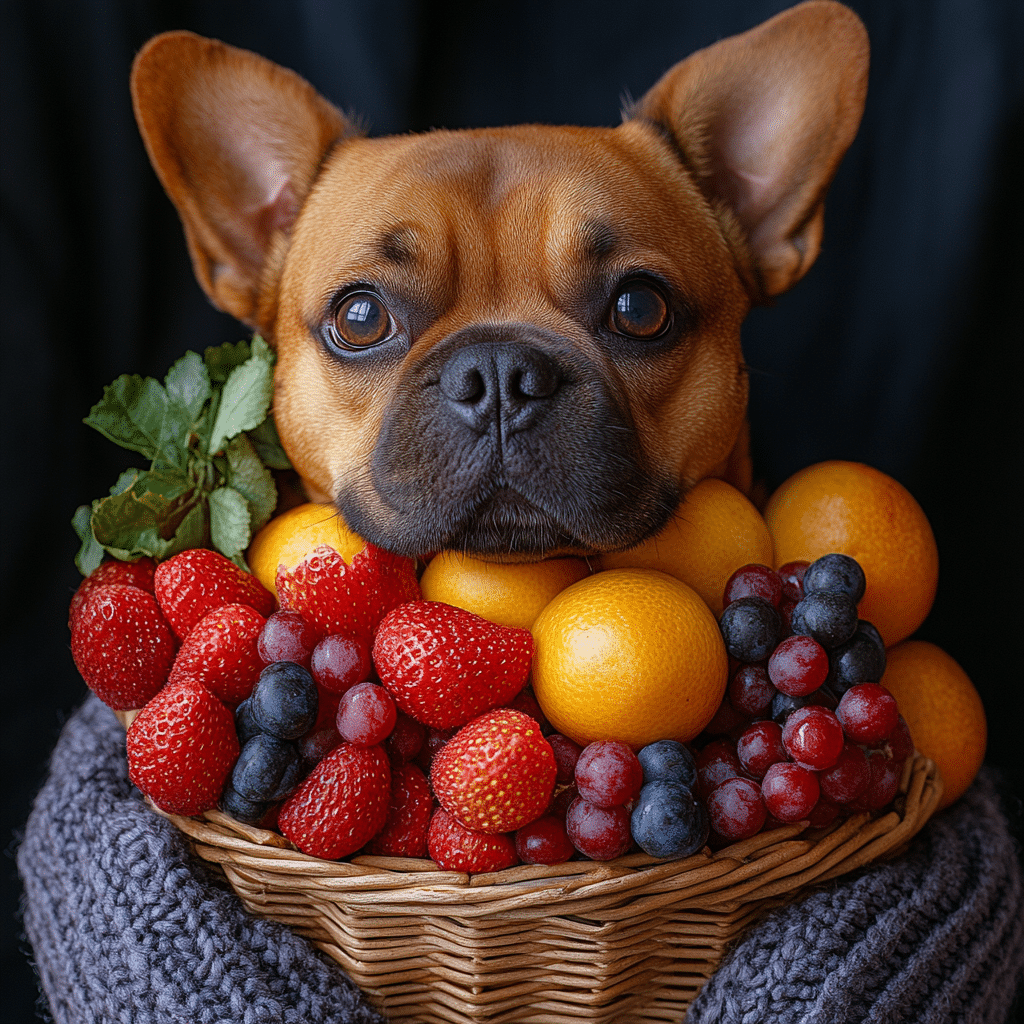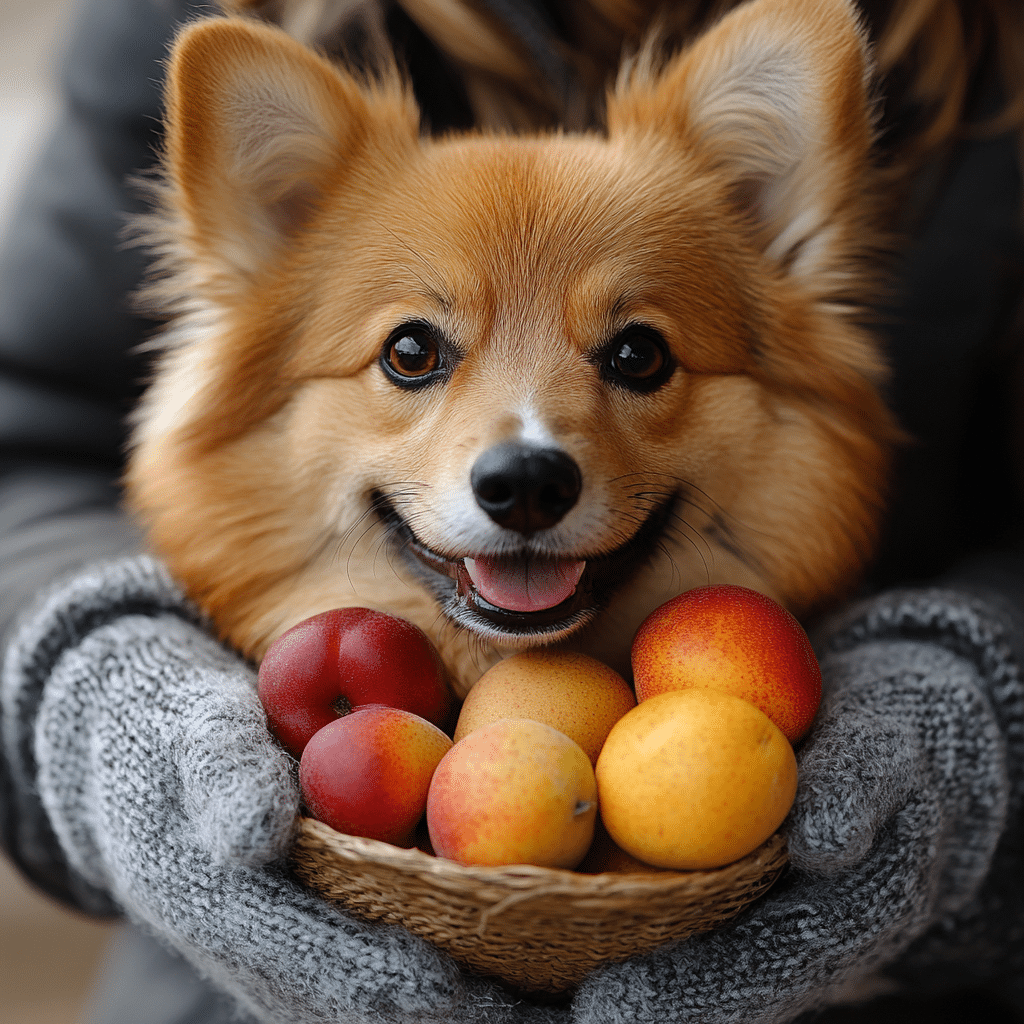When you’re sitting down to enjoy a piece of juicy fruit, you might wonder, “What can dogs eat fruit-wise?” Fruits can be a tasty and beneficial addition to your dog’s diet, but not all fruits are safe! In this article, we’ll explore which fruits are safe for your furry friends, tips for introducing these delicious treats, and what fruits to avoid to keep your pup safe and healthy.
1. Exploring Fruits Safe for Dogs: A Top 7 List
It’s crucial to focus on safe fruits that can provide health benefits. Here’s a curated list of the top seven fruits that can be enjoyed by your canine companions:
1. Blueberries
Blueberries are not just for pancakes! They’re rich in antioxidants, which help combat oxidative stress in dogs. Low in calories, these little gems serve as a guilt-free treat. Studies even suggest that these tiny fruits can promote memory function in aging dogs. So, toss a few in your pup’s bowl the next time you snack!
2. Apples
Most dogs love the crisp crunch of an apple! Apples are a fantastic source of vitamins A and C, as well as dietary fiber. Just don’t forget to remove the core, leaves, and seeds before sharing; the seeds contain cyanide, which can be harmful if chewed in large amounts. Always cut apples into manageable pieces to avoid choking hazards.
3. Bananas
Bananas make a sweet and nutritious treat packed with potassium and vitamin B6! These fruits can help your dog’s muscle function. Just keep in mind that bananas are high in sugar, so offer them in moderation to avoid a potential weight gain. A small slice is enough to brighten up your pup’s day!
4. Watermelon
Is there anything better on a hot day than refreshing watermelon? This summer favorite is packed with hydration, making it a perfect fruit for warm weather. Just remember to remove the seeds and rind to prevent choking hazards and digestive issues. Your pup will love the juicy goodness!
5. Strawberries
Strawberries aren’t just tasty, they have significant health benefits too! They offer a high amount of fiber and vitamin C, which are great for your dog’s overall health. They may even help with keeping your dog’s teeth cleaner by naturally whitening them. Just make sure to remove the stem before diving in!
6. Pineapple
Who doesn’t love a tropical escape? Pineapple is loaded with vitamins, minerals, and an enzyme called bromelain, which can aid digestion. However, cut away the hard skin and core, as they can cause digestive discomfort. Just offer your pup the soft, fleshy part!
7. Peaches
Fresh peaches can be a delightful treat when served in moderation. They are rich in vitamins A and C. However, be careful to remove the pit, as it poses a choking hazard and can be toxic if ingested. A few slices can make for a refreshing delight!

2. Can Dogs Eat Fruits with Caution? Understanding Safety Tips
While discussing what can dogs eat fruit-wise, it’s important to include some safety tips to ensure your pup’s health.
Portion Control
Fruits can be a great treat, but portion control is key! They should make up no more than 10% of your dog’s daily caloric intake. Overdoing it can lead to gastrointestinal upset or unwanted weight gain. Keep those fruity delights balanced in your dog’s diet!
Allergic Reactions
Just like us, dogs can have allergies. Introduce any new fruit slowly and in small amounts. Watch for any signs of adverse reactions, such as itching, swelling, or tummy troubles. If you notice anything unusual, it’s best to consult your vet.
Fruit Preparations
Always wash fruits thoroughly to remove pesticides or harmful chemicals. For fruits like apples that have skins, peeling might reduce exposure to such substances. Clean fruits mean happy, healthy pups!
3. What Fruits Should Dogs Avoid?
Knowing what fruits your dog should steer clear of is as essential as knowing what can dogs eat fruit-wise.
Grapes and Raisins
Never give your dog grapes or raisins! They are highly toxic to dogs and can lead to kidney failure, even in small quantities. Look out for any signs of distress, like vomiting or lethargy, and call your vet immediately if you suspect your dog has ingested them.
Avocado
Although avocados are celebrated as a superfood for humans, they contain persin, which can be harmful to dogs in high amounts. To be safe, it’s better to avoid giving them any part of this fruit.
Cherries
Cherries may seem safe, but caution is crucial. While the flesh of a cherry is safe, the pits pose a choking risk and contain cyanide, which can be dangerous when ingested. It’s best to leave cherries out of your dog’s diet entirely.

4. Spotlight on Other Pets: Can Snakes Feel Love and Other Curiosities
Let’s take a detour into the world of exotic pet care and explore some interesting insights, particularly about animal behaviors.
Can Snakes Feel Love?
Snakes might not wag their tails like dogs, but they can form bonds with their owners. Though their emotional expressions differ from mammals, many snake owners report that their pets become accustomed to their handlers, displaying trust through calm behavior during interactions.
What Colors Can Rabbits See?
Rabbits are equipped to see a vibrant spectrum of colors. Thanks to two types of cones in their retinas, they can differentiate between colors, including blue and green. However, they have a limited ability to see red, which sets them apart from humans.
Do Birds Eat Popcorn?
In moderation, popcorn can be safe for birds, but it’s best unbuttered and served plain. Avoid toppings that could be harmful. Treat your feathered friends with a simple, wholesome snack!
Can Birds Eat Chocolate?
Absolutely not! All species of birds must avoid chocolate, as it contains theobromine, which is toxic to them—just like it is for dogs. Keeping chocolate out of reach is essential for your bird’s well-being.
Can Chickens Eat Chocolate?
Chickens should also steer clear of chocolate. Just like with dogs and birds, indulging in chocolate can lead to significant health risks. Stick to healthy, species-appropriate treats for your flock!
5. Treating Your Dog with Fruits: Innovative Ways to Incorporate Nutritional Snacks
Want to include fruits in your dog’s diet in creative ways? Here are some fun ideas to try!
Frozen Fruit Treats
During hot weather, nothing beats a refreshing frozen treat! Blend pureed strawberries and watermelon, pour them into molds, and freeze. It’s a delightful, cool snack your pup will love, keeping them hydrated during warm days.
Dog-Friendly Fruit Salads
Craft a colorful fruit salad using a variety of safe fruits. This can serve as a training treat or a reward during playtime. Your dog will love this tasty and visually appetizing meal!
Homemade Fruit Dog Treats
Get crafty in the kitchen with dog-friendly treats! Bake snacks that incorporate fruits like mashed bananas and oatmeal for wholesome delights. These homemade goodies will surely make tails wag!
Embracing the right fruits in your dog’s diet not only provides enjoyment but also contributes to their overall health. Understanding the balance of nutrients and potential hazards lets you enhance their lives with tasty, safe choices. Treat your furry friend to some fruit now and then, and enjoy the joy it brings!
Remember to always keep an eye on what can dogs eat fruit-wise, as the right treats can make a world of difference in your dog’s life. Happy treating!
What Can Dogs Eat Fruit: Fun Trivia and Interesting Facts
When we talk about what can dogs eat fruit, it’s not just about the tasty treats but also the nutritional perks! For example, did you know that some fruits pack a vitamin punch? Blueberries and apples are packed with antioxidants that help boost your furry friend’s immune system. Speaking of unique treats, did you hear about the rise of gourmet pet foods? Ever thought about lobster Dogs? Yes, they exist, and some dogs go wild for them! While fruits should be a special treat, you can mix it up and add a hint of variety to their meal routine.
Now, let’s dig a bit deeper! Many dog owners are curious about the safety of their furry friends munching on fruit. Some fruits, like grapes and cherries, can be harmful. That’s why it’s vital to know what’s safe and what’s not. Speaking of safety, a surprising fact is that certain medications, such as acepromazine, can affect how a dog’s digestive system interacts with certain snacks, including fruits. This shows how being informed about your dog’s health is key to keeping them safe and sound!
And there’s more! When considering what can dogs eat fruit, think about fun ways to incorporate them into play. Some owners blend fruits into DIY treats or toss them into a food-dispensing toy. It’s not just tasty; it keeps your dog engaged! If you’re looking for non-toxic cleaning solutions after your pet’s fruity snacks, remember to check out those pet-friendly options. Keeping your home fresh and your pal safe is totally achievable! Just as you’d think about a prized accessory like a Cartier necklace, you should also think about what goes into your dog’s food, ensuring you’re giving them the best care possible.



